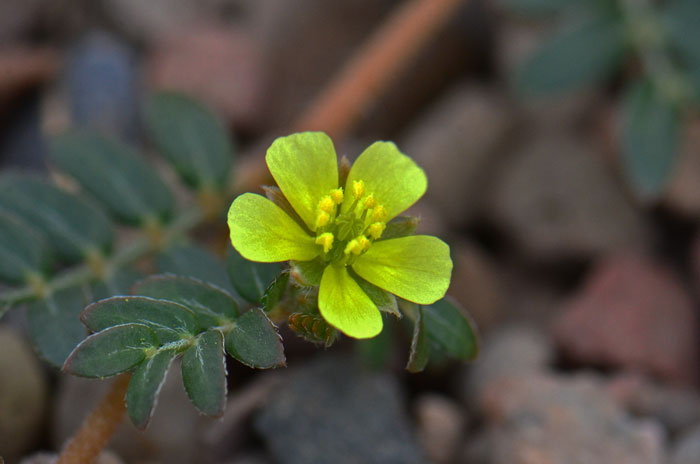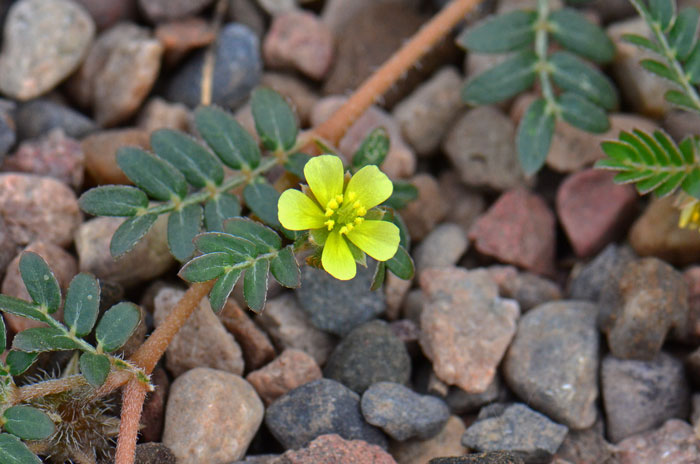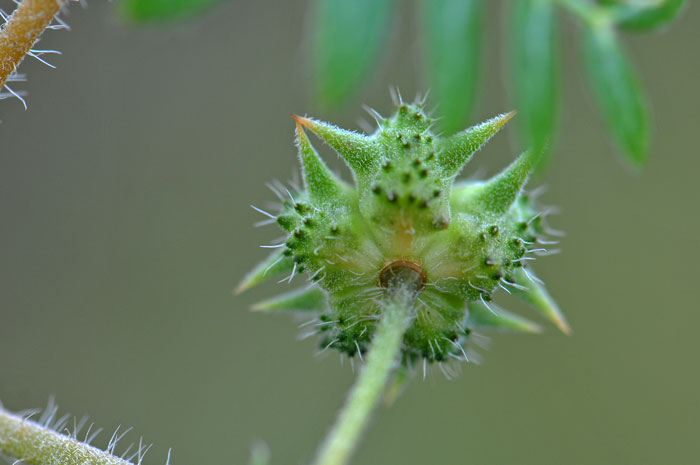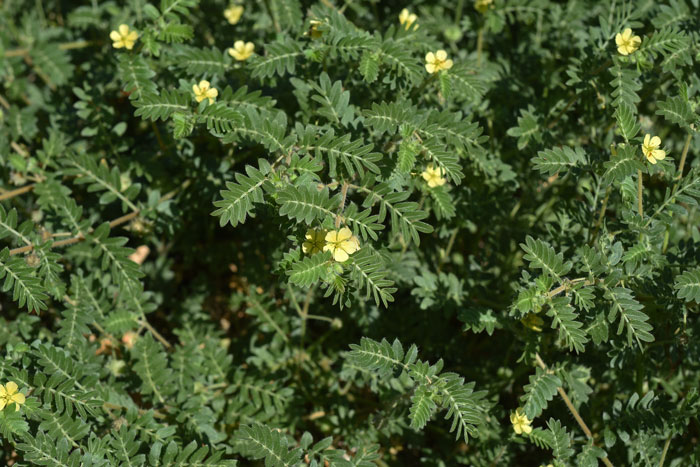Tribulus terrestris, Puncturevine




Scientific Name: Tribulus terrestris
Common Name: Puncturevine
Also Called: Bullhead, Caltrop, Goathead, Goat-heads, Mexican Sandbur, Puncture Vine, Texas Sandbur (Spanish: Toboso, Torito, Raíz de Abrojo, Cabeza de Chivo)
Family: Zygophyllaceae, Caltrop Family
Synonyms: ()
Status: Introduced
Duration: Annual
Size: Up to 10 inches or so; low-growing prostrate species.
Growth Form: Forb/herb; stems silky to appressed-hairy, sharply bristly to glabrous.
Leaves: Green; pinnately compound with 6 to 12 leaflets.
Flower Color: Yellow; fruit flat, breaking up into 5-nutlets with strong dorsal spines hairy to glabrous.
Flowering Season: March to October; April to October in California.
Elevation: Up to 7,000 feet; generally below 3,000 feet in California.
Habitat Preferences: Often abundant at roadsides, fields, vacant lots and fields, railways and disturbed areas.
Recorded Range: Tribulus terrestris is a weedy plant throughout the United States and also in British Columbia and Ontario in Canada; most likely in all Canadian provinces.
North America & US County Distribution Map for Tribulus terrestris.
U.S. Weed Information: In North America Tribulus terrestris can be weedy or invasive by 46 states and by the following authoritative sources: Weeds of Nebraska and the Great Plains; Invasive exotic pest plants in Tennessee; Weeds of the United States and Canada and by Weeds of the West. Plants included here may become weedy or invasive.
Invasive/Noxious Weed Information: In North America Tribulus terrestris is listed as a Noxious Weed by the states of: Arizona, puncturevine Prohibited noxious weed, puncturevine Regulated noxious weeds, California, puncturevine C list (noxious weeds); Colorado, puncturevine C list (noxious weeds); Idaho, puncturevine Noxious weed; Iowa, puncturevine Secondary noxious weed; Nevada, puncturevine Noxious weed; North Carolina, puncturevine Class B noxious weed; Oregon, puncturevine "B" designated weed, puncturevine Quarantine; Washington, puncturevine Class B noxious weed. Plants included here are invasive or noxious.
Wetland Indicator: No information available.
Threatened/Endangered Information: No information available.
In the Southwestern United States: Arizona, California, Nevada, New Mexico and Utah each have 1 species of Tribulus, Texas has 2 species. All data is approximate and subject to taxonomic changes.
Comments: Tribulus terrestris is a weedy herb introduced from southern Europe and expanding its range throughout most of North America. Tribulus terrestris is aptly called "Puncture Vine" because its fruits easily puncture bicycle tires and ready inflict pain on unsuspecting humans and perhaps small mammals as well.
Tribulus terrestris has been used as a ceremonial medicine by southwestern indigenous peoples.
Navajo Drug, Ceremonial Medicine, Plant used as a traditional ceremonial medicine.
See ethno-botanical uses at Native American Ethnobotany, University of Michigan, Dearborn.

